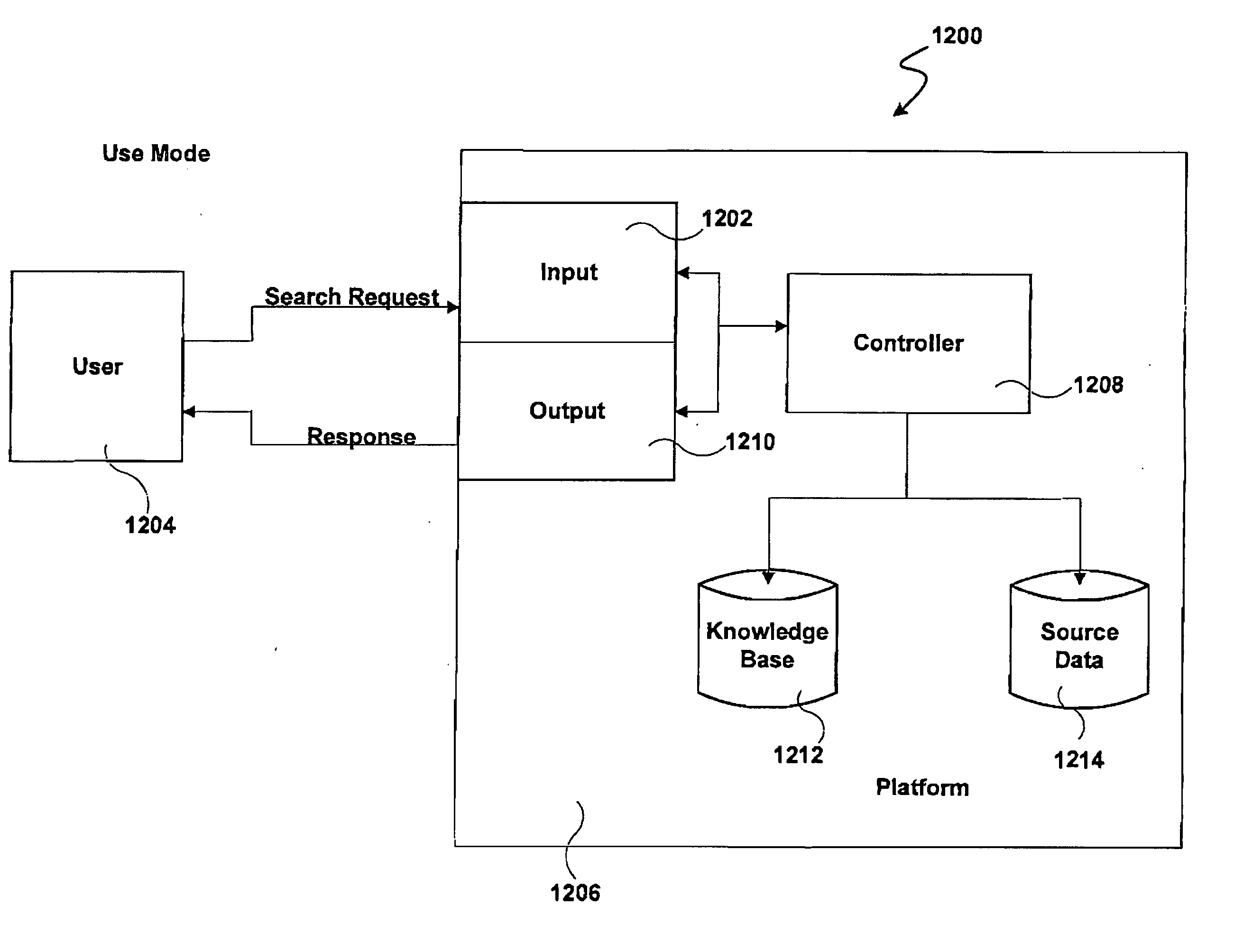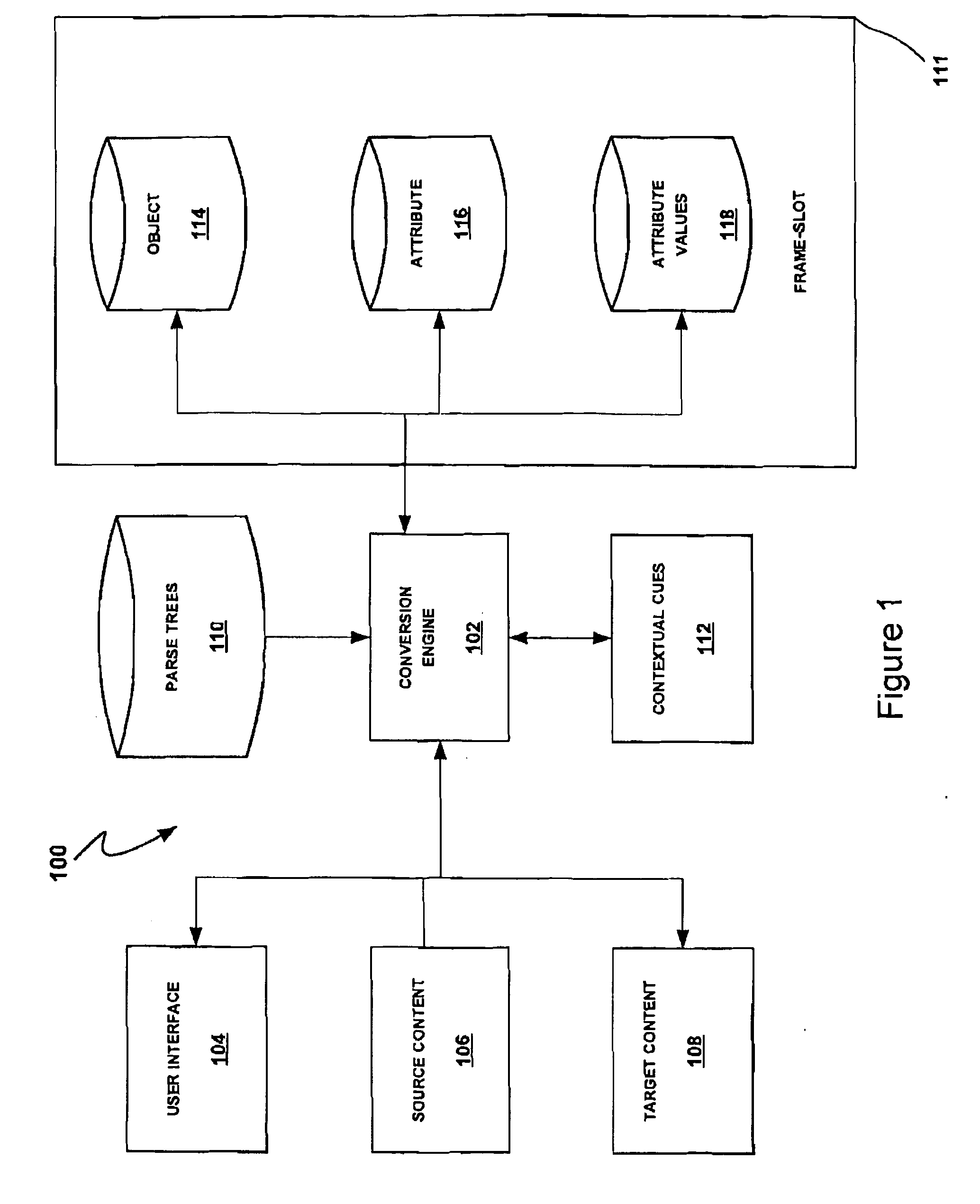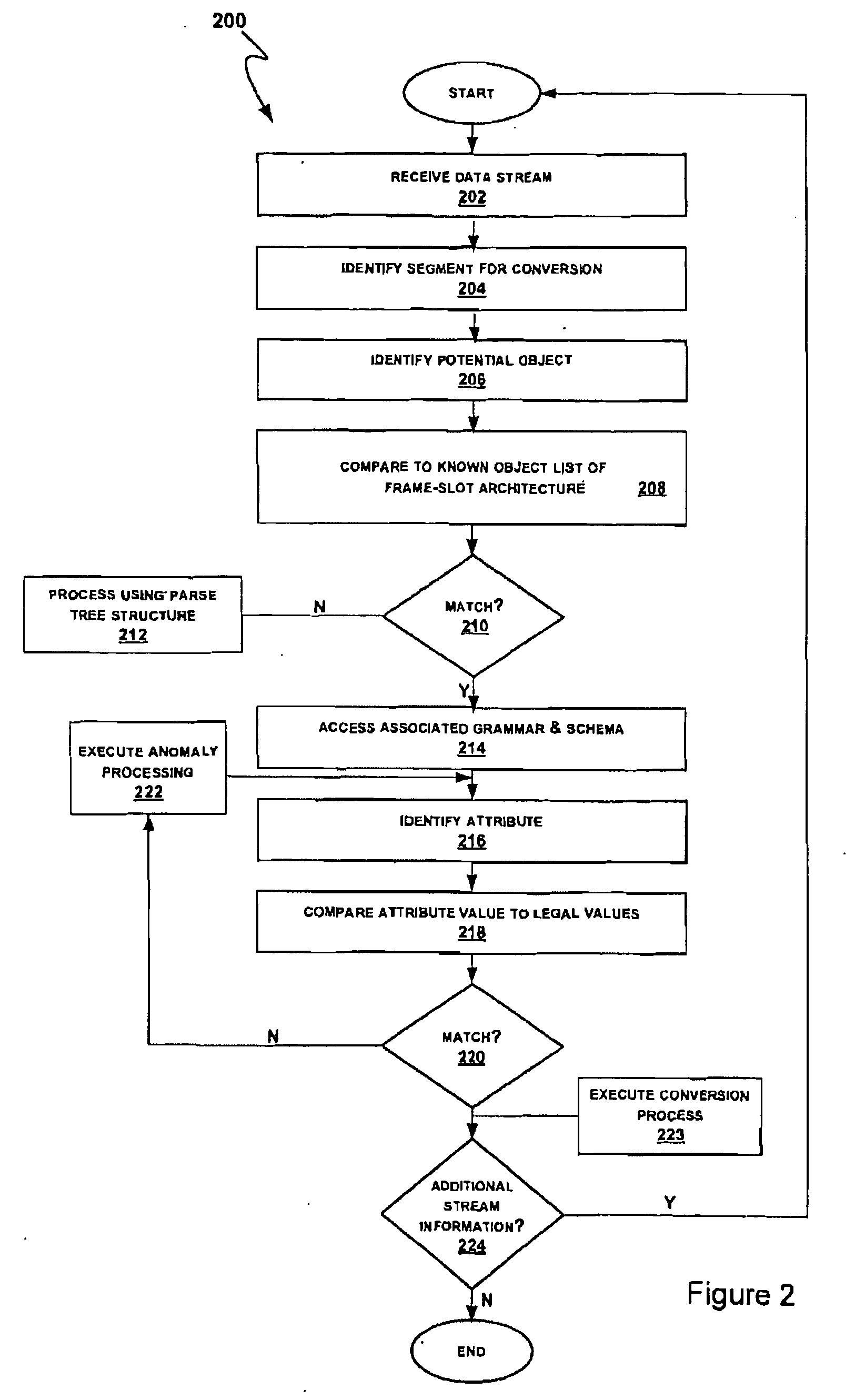Application generator for data transformation applications
a technology for application generators and data transformation, applied in the field of software development and maintenance, can solve problems such as severe limitations in early software applications as to functionality
- Summary
- Abstract
- Description
- Claims
- Application Information
AI Technical Summary
Benefits of technology
Problems solved by technology
Method used
Image
Examples
Embodiment Construction
[0032] The present invention relates to generating applications for a data conversion environment. Such applications generally involve converting data from a first or source form to a second or target form. As noted above, such conversions may be desired in a variety of contexts relating, for example, to importing data into or otherwise populating an information system, processing a search query, exchanging information between information systems and translation.
[0033] In many cases, these applications involve matching an input to one or more items of information (e.g., search engine applications), publishing data (e.g., generating a catalog), or aggregating data (e.g., via merging databases). Thus, while a core functionality often relates to mapping an input in a first form to one or more corresponding or related outputs, a variety of applications are thereby supported. Particular applications are described below only for purposes of illustration.
[0034] In the following descripti...
PUM
 Login to View More
Login to View More Abstract
Description
Claims
Application Information
 Login to View More
Login to View More - R&D
- Intellectual Property
- Life Sciences
- Materials
- Tech Scout
- Unparalleled Data Quality
- Higher Quality Content
- 60% Fewer Hallucinations
Browse by: Latest US Patents, China's latest patents, Technical Efficacy Thesaurus, Application Domain, Technology Topic, Popular Technical Reports.
© 2025 PatSnap. All rights reserved.Legal|Privacy policy|Modern Slavery Act Transparency Statement|Sitemap|About US| Contact US: help@patsnap.com



